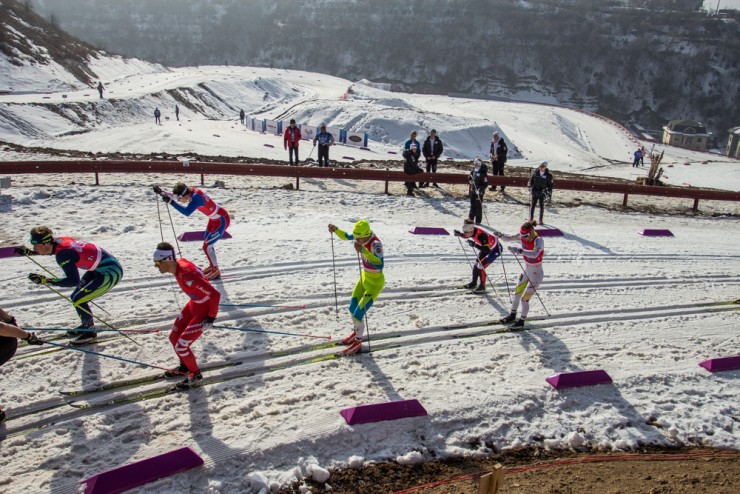
Most of the Americans who headed to Almaty, Kazakhstan, for FIS Junior and U23 World Championships were going to race.
Another man from Alaska? Not so much.
Matt Pauli, a heavily-involved member of the Nordic Ski Association of Anchorage and an International Ski Federation Technical Delegate (TD) traveled to Almaty to TD the competitions.
TD’s have a long list of responsibilities before, during, and after competition, including overseeing preparation of the competition courses, advising the local organizing committee, and attending jury and team captains meetings.
So how, out of all the FIS TD’s in the world, did Pauli end up in Kazakhstan?
“As FIS TD’s we all bring different strengths to the table,” Pauli explained in an email. “I come from a comp committee, trail maintenance, and trail grooming side. I would like to think I am competent as a TD. I have been involved with cross country ski competition organization and officiating well over 30 years now, starting with the first and only World Cup held in Anchorage in 1983.”
He also worked as a Technical Delegate Assistant (TDA) in Kazakhstan when the country hosted Asian Winter Games in 2011. He believes that might have helped him get the assignment for Junior/U23’s, which is a particularly important event for FIS. He also hoped it might be a springboard for other championship assignments in the future; among other Americans, Al Serrano has recently held these appointments.
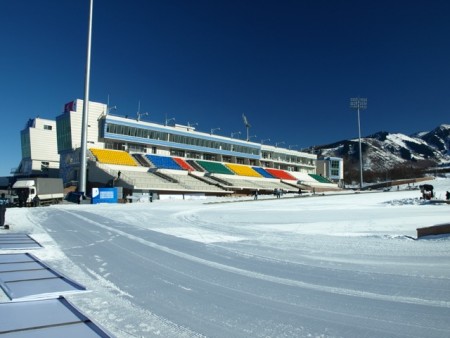
“I was hoping to be in Falun [for World Championships] at this time, not as a TD or jury member, but as a member of the grooming crew,” wrote Pauli, who is on the grooming staff for NSA Anchorage. “I worked with the Chief of Comp, Tomas Jons, at Canmore (he was TD). He was looking for FIS TD’s that knew a thing or two about grooming. It almost worked out but I did have to withdraw my name due to the ‘regular’ job. That, and my wife would like to see me once in a while in the winter and February/March is really busy in Anchorage despite our low snow conditions.”
Despite the current call of duty to his job as an OSHA safety compliance officer, Pauli says that his flexibility with work is actually one of the strengths that he hopes will cause FIS to continue to call on him.
“I have a steady ‘regular’ job that is very accommodating to my ski activities and I get my work done,” he explained. “I am happy to take care of events here at home, let FIS know I am available for the coming season, and see what comes up. I think my flexibility is a strength, plus I can speak German if that is helpful.”
We asked Pauli a few questions about his experience in Almaty, especially considering Kazakhstan’s current bid to host the 2022 Olympic Games. This interview has been edited and condensed.
FasterSkier: Had you ever seen the venue before the event began, and how long in advance did you travel over?
Matt Pauli: I had never been to this venue since it was brand new, but I had been to Almaty in the past. I was TDA for the 2011 Asian Winter Games (AWG). Cross country events for the AWG were held at the Soldatskoe venue which is about an hour drive east of the city.
I arrived two days before the first competition, which is generally adequate.
FS: I’ve heard some reports that there wasn’t so much snow. What were you able to do about that?
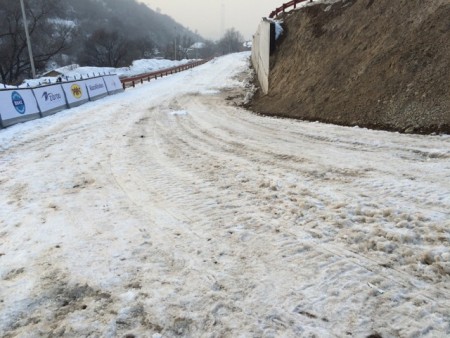
MP: Approximately two weeks before the event, realizing that snow conditions were not favorable to hosting a world championship event, I was asked if I could go over earlier. Work commitments prevented me from doing so. In the interim, the TDA, Georgy Kadykov, arrived three days before me. Georgy is Russian and was the chief of competition for Sochi 2014. He was the TD from the AWG and a good number of the JWSC/U23 volunteers had worked at Sochi, including the Sport Manager. I had been in regular email contact with FIS, the OC representative, the Chief of Competition, and the homologation inspector.
I really don’t think being there a week in advance would have changed a lot of the conditions faced by the athletes and coaches. A Skype call which took into account Alaska, Europe, Almaty time differences was held to get a first hand report from the TDA. The message was clear at that time that conditions were not optimal. At this point, a plan of action was determined and the OC was told what was needed.
FS: When you arrived, what kind of shape were things in?
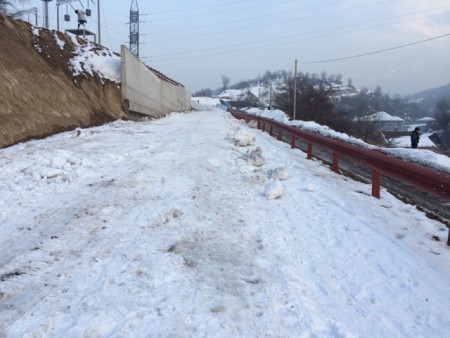
MP: I arrived at 3 am, went to my hotel to get a short nap, and had breakfast with the FIS representative Michal Lamplot and Georgy. There, I received the report on conditions and what the OC was beginning to do. We left shortly after that to see the venue where we took a walk of the Blue 2.5. There was really only a viable 800 meter sprint loop and okay skiing on the lower 2.5 k blue loop. The upper 2.5 K blue was in good shape. That portion was in good shape and actually utilized more of the natural terrain as well as running through the apple tree groves. After all, Kazakhstan is the birthplace of apples. The red loops were nowhere near skiable.
Daily afternoon debrief meetings continued with city officials and competition committee (CC) members for the rest of the week. The message I understood was that city officials accepted the fact they were not ready and that work would continue throughout the week to ensure the event would go as planned. We then drafted a plan on how much snow was needed to be hauled or produced to start making race course(s). At this point we also determined that there was no way a viable sprint course was going to be ready in two days.
Postponing the first day of racing was a good decision. It did mean a double sprint day, all juniors and all U23, so the days became that much more hectic. It also meant that juniors would get one less rest day. The jury appreciated this flexibility amongst the teams. As anyone knows, beginning a championship event with a sprint event always raises the stress level. Having a World Cup timing crew in Swiss Timing helps. The local comp committee did a very good job in getting the events in.
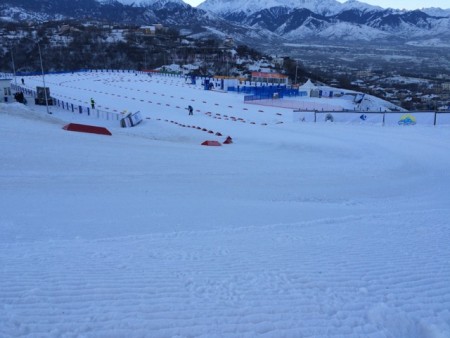
Conditions in Almaty are not unlike conditions I have experienced here in the U.S. at national championship events.
FS: What about the smog? In general, is that something that is on TD’s radar, or is there any precedent for how to handle unusual factors that may affect athletes’ health and performance?
MP: The only reason air quality was on my radar was because of my prior visit in 2011. I knew how athletes liked to take either a morning or evening run. I wondered how they would accomplish that.
Air quality concerns are out of the TD’s control. Weather events on-site are more readily addressed by a TD. This could include temperature, high winds, snowfall, icy conditions. A TD takes these issues into account to discuss with the jury if an event should be postponed, program changed, or even canceled.
FS: In terms of smog, it seems like Almaty isn’t the only place you could imagine it being a problem. I know Salt Lake City has some crazy inversions sometimes too, and there were smog problems at the Beijing Olympics.
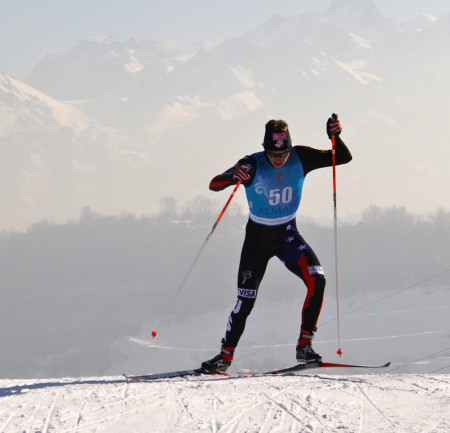
MP: Almaty can be compared to Salt Lake City on a number of factors. They both sit at the foothills of massive mountain ranges. They are both at elevation. They both have high volumes of vehicular traffic.
But Soldier Hollow is probably not impacted as much as the Almaty city venue. The Soldatskoe venue east of Almaty is similarly not impacted. It is actually very similar to Soldier Hollow, including the name which I believe translates to “Soldiers Valley.” We deal with similar inversions here in Alaska.
FS: Were there a lot of spectators, and was it a spectator-friendly venue? Are there other things the venue is able to take advantage of in terms of being close to a big city?
MP: Depending on the event, locals did show up to watch. I did note that there were less parents than what I observed from the 2014 JWSC/U23 in Val di Fiemme. I would imagine travel considerations had a lot to do with that. The stadium was very spectator-friendly, although it had a hard time accommodating all the race formats. It is just not a good stadium for mass starts and skiathlon.
Any city can benefit from having a ski venue as close to the population as possible. Unfortunately, the constructed trail system was not really done with the beginner or intermediate skier in mind. It is a racing venue.
The venue had a stunning backdrop with 3000 to 4000 meter peaks to the south. But the actual race trails were not aesthetically pleasing. Steel guardrails for fencing required the addition of pads. Concrete formwork was used for trail set backs. The stadium was set on an excavated plateau. Skiers passed adjacent to and under high voltage powerlines since a substation existed at the top of the red loops. You could hear the crackle as well as having your hair stand-up on end when skiing under it.
FS: How was the local organizing committee? Was it easy to work with them to implement changes that you thought were necessary?
MP: The OC was the city of Almaty with direct contact with the mayor. We (FIS, Jury) were briefed on the city’s intent of hosting all events at the the new venue. While we understood this, we also expressed our concern on the lack of course preparation.
The vice-mayor took up our concerns immediately and the trucks started hauling snow. This continued throughout the week, following daily afternoon briefings on what needed attention. This did impact training and course inspection, and in some cases created some significant safety hazards between machines and athletes. Some of this was created by the on-going trailwork, and some by the athletes, coaches, and technicians themselves. It was not ideal.
When I was given the TD assignment in Spring 2013, I figured the event would be at Soldatskoe. It was not until July 2014 that I learned the city venue was being developed as the location for the championships. The final trail design had not taken place, construction was just beginning. They had held a World Cup Nordic Combined event there on a smaller trail system, so it seemed that the city venue would be acceptable.
The frequency of venue reports was agreed to with the OC/CC at the Fall 2014 FIS meeting in Zurich. The information we received was really no different than what I have received in the US for similar competitions. Sometimes it is just real difficult to admit that you are falling behind and need assistance. The OC had committed to a very optimistic construction schedule in completing the venue. The last excavator actually left the stadium at the end of December.
I really had no issues with the CC. They were not unlike any of the comp committees I have headed up, been a part of, or had to interact with as a TD. While there was a difference in language, there was no difference on putting on a quality ski competition.
FS: Thinking about Almaty’s Olympic bid, do you think this is a potential Games venue?
MP: Cross country and biathlon events would be better off held at Soldatskoe. There was a significant investment there in terms of competition buildings, trails, and other infrastructure for the AWG. There would definitely need to be some transportation upgrades as well as lodging facilities constructed. For the city venue a lot of work would need to be done in order to have a viable stadium for all events required of an Olympic competition calendar. Since it is adjacent to the jumps, it fits the bill for Nordic Combined events. But mass start events are not a good option for the city venue. The team sprint would be difficult to fit in the stadium. I think it would be important for another high level event be held at the Soldatskoe venue.
Chelsea Little
Chelsea Little is FasterSkier's Editor-At-Large. A former racer at Ford Sayre, Dartmouth College and the Craftsbury Green Racing Project, she is a PhD candidate in aquatic ecology in the @Altermatt_lab at Eawag, the Swiss Federal Institute of Aquatic Science and Technology in Zurich, Switzerland. You can follow her on twitter @ChelskiLittle.



